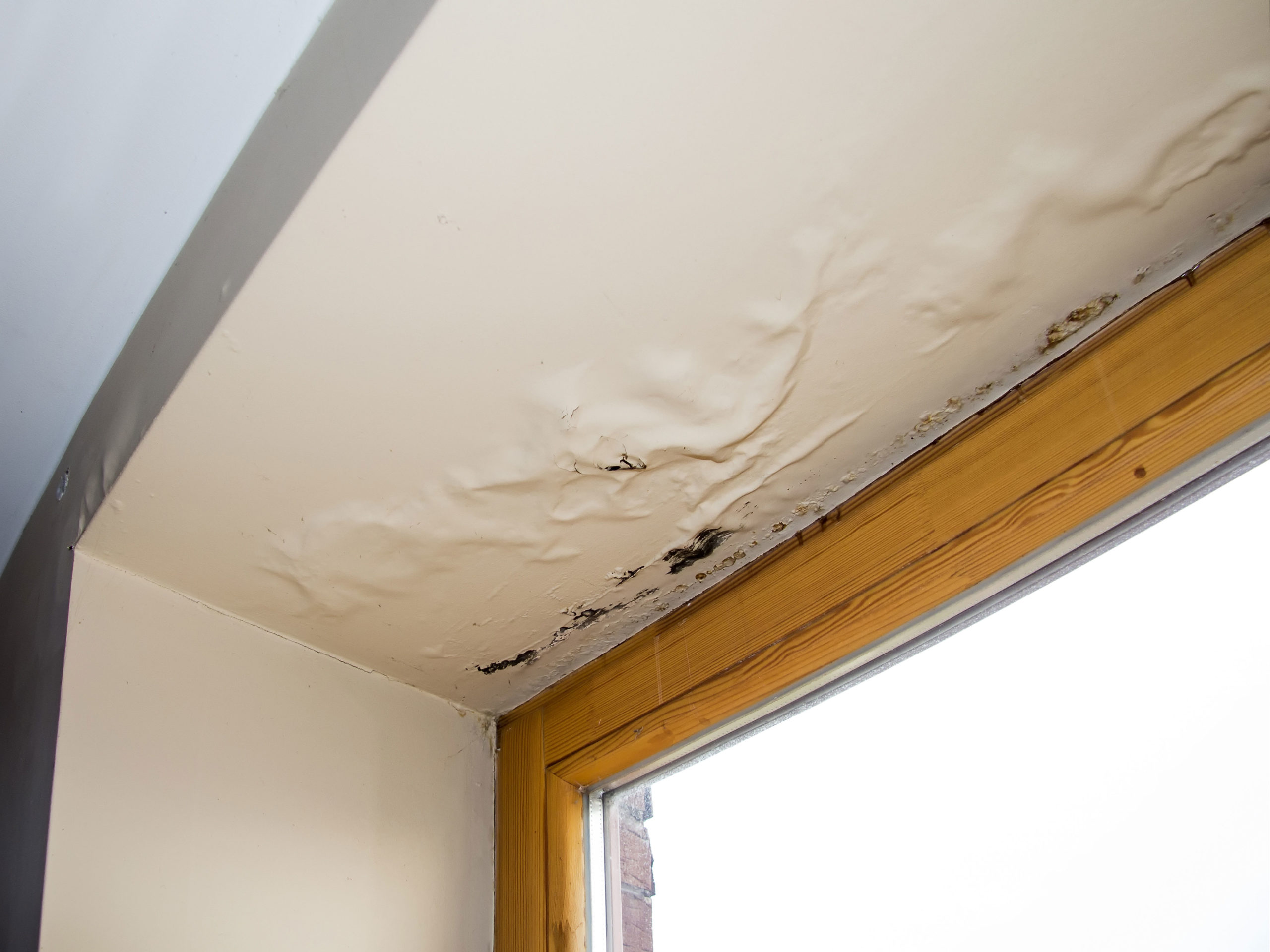It might not be a leak – it might be condensation.
While the majority of interior water damage in commercial buildings is caused by roof damage, there is another possible cause that you may not have considered. When cool, dry inside air causes the warm moist outside air to change form into liquid water droplets, it can lead to problems like leaks and mold growth inside your building.
The good news is that there are ways of preventing this from happening in the first place! Read on for more information about roof leaks caused by condensation.
What is condensation and does it actually cause commercial roofs to leak?
Condensation is the process in which water vapor changes from a gas into a liquid. As warm, moist air comes into contact with cooler surfaces such as metal or wood on your commercial property’s exterior walls or roof deck, that moisture begins to cool and form droplets of water.
Technically, this is not a leak as it is not caused by a perforation in your roof’s membrane. However, if it continues to build up and there is nothing to stop it, this water can begin to accumulate inside your building, just as a leak would.
How to identify a potential condensation leak in your commercial roof
Leaks from condensation can lead to water damage similar to leaks caused by a perforation in your roof’s membrane. So how do you know what you’re dealing with?
When looking for a leak due to condensation, look for the following signs:
- Warm patches on exterior walls
- Patches of melted snow on your roof
- Moisture stains or bubbling paint in these same areas
- Water-stained ceiling tiles
- Small puddles of water on the floor
If you notice any of the above, it’s possible that condensation is causing leaks throughout your commercial property. Don’t hesitate to contact a Mint Roofing professional for assistance right away!
To prevent condensation from leaking into your commercial property, it’s important to make sure that gaps in insulation are sealed. You can also take proactive measures to reduce moisture by installing ventilation fans or even increasing airflow through the use of floor fans throughout different areas of your building.
How to prevent condensation from ruining your commercial property
Preventing condensation is all about eliminating gaps in the ceiling and wall insulation. Sealing off any gaps in insulation will help keep cold air from mixing with warm, moist air. This in turn prevents water droplets from forming inside your building.
It is important to note that some condensation leaks aren’t even related to the integrity of your roof. If there are areas where the walls of your building come into contact with exterior surfaces, they should be insulated accordingly. Areas near windows are especially susceptible to condensation leaks due to the poor insulation properties of glass.
Alternatively, roof leaks can find their way to walls, making it hard to pinpoint the source of the leak. Our commercial roofing professionals are trained to identify the source of your leak and tell you how best to avoid condensation and prevent future leaks.
Whether your condensation leaks are coming from your roof/ceiling or your exterior walls, it is vitally important to fix the issue quickly to avoid interior damage and/or mold growth.
The importance of regular maintenance for your commercial roof
Scheduled maintenance and timely repairs to your commercial roof will prevent it from losing integrity over time which could also lead to leaks when exposed to strong weather conditions. Routine inspections can also help identify deficiencies in your insulation that could ultimately lead to condensation leaks. Making sure that you keep up with regular maintenance helps you get the longest possible life from your roof.
Quality materials make a difference
High-quality and efficient roofing materials will help minimize leaks. They not only help you to avoid leaks due to condensation or other external causes but can also increase the lifespan of your commercial roof investment. Mint Roofing uses only the highest quality materials from Johns Manville, Elevate (formerly Firestone), Carlisle SynTec, and GAF.
What to do if you find a leak
What should we do if there’s a leak? If you find that you have water coming in through your commercial property’s ceiling or walls, it is important to locate the source of the problem as soon as possible. This will prevent any further damage from occurring and will help minimize costs when hiring an experienced contractor to fix the issue.
Avoid waiting for repairs or if you see any signs of leakage, as this could lead to significant damage that is more costly than initial repairs.
When looking at ways to prevent condensation leaks and keep your commercial property’s roof trouble-free, it’s as simple as scheduling regular maintenance. This will help prevent all types of leaks and increase the lifespan of your commercial roof.
Our TopSite Preventative Maintenance Program is the easiest way to make sure that your commercial roof is ready for anything, year after year. Give us a call today to learn more about how you can extend the life of your roof and save money over time.
FAQs
Q: What is condensation and how does it mimic commercial roof leaks?
A: Condensation is the process in which water vapor in the air turns into liquid when it comes into contact with a cool surface. When condensation occurs on the underside of a commercial roof, it can mimic roof leaks by creating similar signs of water damage, such as wet spots, stains, or dripping. However, unlike actual roof leaks, condensation does not involve water penetrating through the roof system.
Q: What factors contribute to condensation on a commercial roof?
A: Several factors contribute to the occurrence of condensation on a commercial roof. Poor insulation or inadequate ventilation within the building can create a temperature difference between the interior and exterior, leading to condensation. Additionally, high humidity levels, especially in areas with warm climates or during cold seasons, can increase the likelihood of condensation forming on the roof’s underside.
Q: How can I differentiate between condensation and an actual roof leak?
A: Distinguishing between condensation and a genuine roof leak can be challenging. However, there are a few key indicators that can help you differentiate between the two. If the moisture issue only occurs during specific weather conditions, such as cold mornings or humid days, it is more likely to be condensation. Additionally, condensation is often localized and will not leave visible signs of damage on the roof’s surface or penetrate through the roof system.
Q: Can condensation cause long-term damage to a commercial roof?
A: While condensation itself does not directly damage the roof system, it can contribute to the deterioration of certain roof components if left unaddressed. Over time, excessive condensation can lead to the growth of mold and mildew, which can affect the integrity of insulation, ceiling tiles, and other materials in the building. It is crucial to address condensation issues promptly to prevent potential long-term damage.
Q: How can condensation issues be prevented or resolved on a commercial roof?
A: Preventing and resolving condensation issues on a commercial roof involves a combination of proper insulation, ventilation, and humidity control. Ensure that the building’s insulation meets recommended standards and is properly installed to minimize temperature differences. Adequate ventilation, such as ridge vents or exhaust fans, can help regulate moisture levels and prevent condensation buildup. Additionally, maintaining appropriate indoor humidity levels through dehumidifiers or HVAC systems can reduce the risk of condensation. Consulting with a professional roofing contractor is advisable to assess your specific situation and implement effective solutions.



